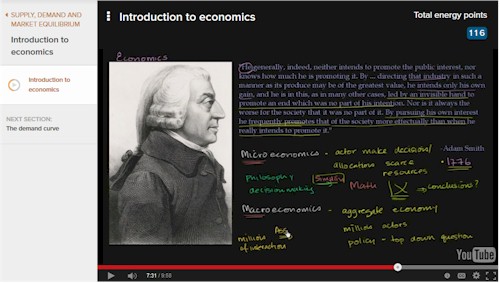Objectives:
- Utilize the Water/Diamond Paradox to understand what determines value
- Introduce “thinking on the margin” and its role in economics
- Define the “labor theory of value” and critically examine its pitfalls
- Apply cost-benefit or marginal analysis to understand everyday consumer behavior
Reading For This Module:
From “Introducing Economics through a Collection of Free Articles by Economists”:
- Incentives Matter by Russell Roberts
- Marginalism by Steven E. Rhoads
Opening Vignettes:
Introduction:
What determines the value of something? Is it how much work goes into making it? Is the stuff valuable because we need it the most? If so, how can we explain the fact that diamonds are generally more valuable than water? How might “thinking on the margin” help us resolve this economic question?
Dr. Wentland Lectures:
Personal Finance, What Determines Value Part 1 (video)(12:22)
These videos cover what determines the value of something. Watch for factors that impact value and how to resolve the Water/Diamond Paradox…. Timings are placed next to the title of the videos to give you a quick idea of the time commitment when you sit down to watch them.
Personal Finance, What Determines Value Part 2 (video) (20:32)
Personal Finance, What Determines Value Part 3 (video) (17:18)
KHAN ACADEMY CONTENT:
*Note: KHAN Academy content is available on a variety of topics that may be able to help you in other classes!
Introduction to Economics (1 video)(09:58)
Please view the following section of this lecture covering an Introduction to Economics and the foundations laid by Adam Smith to assist in understanding the driving forces behind economic principles aided by insight from a few other economists.

visit this lecture at KHAN Academy site now
A (Shorter) Introduction to Economics by Economists Tyler Cowen and Alex Tabarrok (Video) (3:31)
Economics is much more than just numbers and graphs. In fact, we can use economics to explain much of what we encounter in our daily lives. For instance, why is customer service at your local restaurant usually better than that of the cable company? To find the answer we can take a closer look at the incentives at play. For another example, we look to eighteenth century Great Britain. What did bad incentives have to do with the death rate of prisoners shipped from England to Australia? (-Taken from video description)
Thinking At The Margins (video)
Why are diamonds more expensive than water? Essentially, the marginal utility of water decreases faster than the marginal utility of diamonds. Put another way, people face decisions in a particular context and time. In modern economies, people have ready access to water on the margin, but do not have the same level of access to diamonds. (-Taken from video description)
Reflection:
- How well does the labor theory of value explain what determines value?
- How does weighing marginal costs and marginal benefits help us make decisions?
- How does marginal analysis resolve the Water/Diamonds Paradox?
Practice Quiz
Open practice quiz in new window/tab

